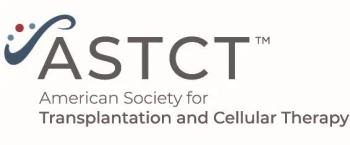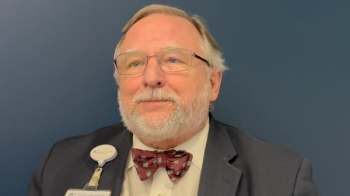
JNJ-5322 Shows Efficacy in Later-Line Multiple Myeloma
“If you have a [patient in the] fourth or fifth line, [JNJ-5322] could be a valid drug of choice,” said Rakesh Popat, MBBS, PhD, MRCP, FRCPath.
In a phase 1 trial (NCT05652335) that evaluated the trispecific antibody JNJ-79635322 (JNJ-5322), the median number of prior lines of therapy was 4. The agent, in patients who were exposed to prior BCMA/GPRC5D-targeted therapy, elicited an overall response rate (ORR) of 55.0% at 50 to 300 mg. In those who were BCMA/GPRC5D naive, the ORR was 100.0% in both patients who received 100 mg once every 4 weeks, the recommended phase 2 dose, and in those who received 300 mg once every 4 weeks.
These results were shared at the
He concluded by emphasizing that, for patients in the fourth or fifth line of therapy, JNJ-5322 is a valid option.
Popat is a consultant hematologist at University College Hospital, leads the Myeloma Clinical Trials Program, and is the program lead for the National Institute for Health Research University College London Hospitals Clinical Research Facility.
Transcript:
What’s of note in this study was that these patients did have 4 or more prior lines of therapy, essentially, but they were all triple-class exposed. What we also find is if you drill down into the details, the number of patients who were penta-refractory or triple-class refractory was slightly lower than some of the initial studies with teclistamab, elranatamab, and talquetamab. It is a slightly different population. But nevertheless, what it tells us is that in the relapsed/refractory situation, this drug is highly effective. That is much better compared with some of the conventional treatments that we have. As I said, it does offer some advantages compared with the bispecific [antibodies]. If you have a [patient in the] fourth or fifth line, this could be a valid drug of choice.
Reference
Popat R, Touzeau C, Perrot A, et al. First-in-human study of JNJ-79635322 (JNJ-5322), a novel, next-generation trispecific antibody, in patients with relapsed/refractory multiple myeloma: initial phase 1 results. Abstract presented at: European Hematology Association 2025 Congress; June 12-15, 2025; Milan, Italy. Abstract S100.
Newsletter
Stay up to date on recent advances in the multidisciplinary approach to cancer.





















































































